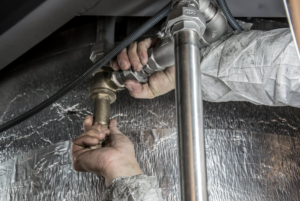
With winter on its way, homeowners should start preparing to winterize their homes now. When it comes to addressing one’s fencing needs for the winter, experts recommend considering the cold’s effect on certain materials. Homeowners can make sure their fencing isn’t compromised during this time of the year by investing in sturdier materials. Consider the following suggestions for winter fencing.
Steel
Steel fences are the quintessential wrought iron fence. These sturdy fences famously withstand water absorption, making them an excellent choice for homes in wintery areas. Moreover, these types of fences often have spaced pickets, making it easier for the wind to flow through–something homeowners should consider if they live in especially windy areas.
Aluminum
Want a sturdy material that offers a bit more leeway than steel? Aluminum fences are like steel fences in that they have a “wrought iron” look, especially when painted black. On top of that, the black coating can help protect against rust and erosion. With aluminum fencing, homeowners can expect a relatively easy installation along with an uncompromising structure. Consider putting in a black aluminum fence to withstand the most brutal winter weather.
In addition to staying strong during the coldest months of the year, aluminum isn’t particularly vulnerable to corrosion, painted or not. This makes it an even more appealing choice for homeowners that live in rainy areas. Similarly, this type of fencing doesn’t fade or rot, making it the clear winner when pitted against other materials that would otherwise be damaged by sunlight, termites, or moisture.
Recycled Timber with Metal Posts
Considering a wood fence? Try using recycled timber with metal posts. These fences are made of wooden pickets and reinforced with the metal posts. When the weather gets colder and frost begins to form underground, the metal posts will help the fence to keep its structure.
Ultimately, a recycled timber fence with metal posts will last longer than a standard wood fence. Ideally, this type of fence should hold up for the next couple of winters.
Vinyl
A sure-fire way to beat the winter frost with fencing is to use vinyl. With vinyl, the fence won’t absorb any water. However, homeowners should do additional research on using vinyl for their particular climate as plastic can become more brittle with certain temperatures.
Homeowners that ignore best practices for winter fencing will find that the cold weather has a negative effect on their fences. Avoid this sort of situation by taking the aforementioned suggestions to heart and use one of these four materials for your new fence.


